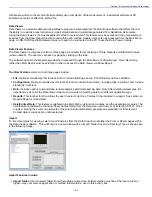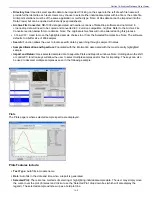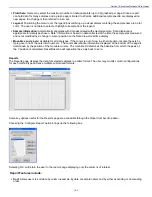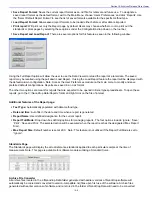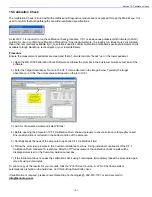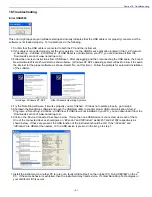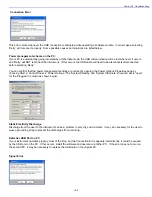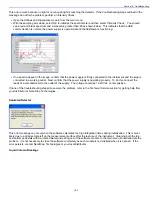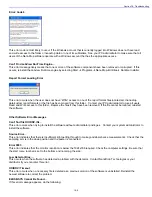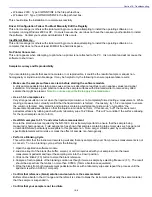
Section 16- Troubleshooting
•
Windows 2000: Type C:\WINNT\INF in the file path text box.
•
Windows XP: Type C:\WINDOWS\INF in the file path text box.
This should allow the installation to complete successfully.
Driver X Configuration Failed- You Must Manually Edit the Registry
This error message (or others with similar wording) occurs when attempting to install the operating software on a
computer running Windows 2000 or XP. It occurs because the user does not have the necessary authorization to install
the software. Contact your system administrator if this occurs.
Insufficient Memory…
This error message (or others with similar wording) occurs when attempting to install the operating software on a
computer that does not have at least 40MB of free hard disk space.
No Printer Connected…
This error appears when attempting to print when a printer is not attached to the PC. It is non-fatal and will not cause the
software to shut down.
Sample Accuracy and Reproducibility
If you are obtaining results that seem inaccurate or not reproducible, it could be the result of sample or aliquot non-
homogeneity or liquid column breakage. It may be helpful to try the following to ensure representative results:
Make sure the sample surfaces are clean before starting the software module
A dirty sample pedestal on startup can cause erroneous absorbance readings (even negative values) and signal
saturation. It is always a good practice to clean the sample surfaces with de-ionized water to remove any dried
sample that might be present.
Note: Do not use a squirt bottle to apply de-ionized water.
Use a 1.5-2 ul sample size
Very strange results can occur when the liquid sample column is not completely formed during a measurement. While
making a measurement, visually confirm that the liquid column is formed. If necessary, try 1.5-2 ul samples to ensure
the column is formed. Also, proteins and solutions containing surfactants are known to “un-condition” the
measurement pedestal surfaces so that the liquid column does not form. If this occurs, “buff” the measurement
pedestal surfaces by rubbing each with a dry laboratory wipe 15-20 times. This will “re-condition” the surface allowing
for the liquid sample column to form.
Heat DNA samples to 55 °C and vortex before measurement
Due to the small volumes required by the ND-1000, it is extremely important to ensure that the sample being
measured is homogeneous. Field experience has shown that samples containing large molecules such as genomic
or lambda DNA are particularly susceptible to this phenomenon. Note: Larger volumes used by cuvette-based
spectrophotometers will minimize or mask the effect of sample non-homogeneity.
Perform a Blanking Cycle
This will confirm that the instrument is working well and that any sample carryover from previous measurements is not
a concern. To run a blanking cycle, perform the following:
1. Open the application software module.
2. Load an aliquot of the blank (the buffer, solvent, or carrier liquid used with your samples) onto the lower
measurement pedestal and lower the sampling arm into the ‘down’ position.
3. Click on the ‘Blank’ (F3) button to store the blank reference.
4. Analyze a fresh replicate of the blanking solution as though it were a sample by selecting ‘Measure’ (F1). The result
should be a spectrum that varies no more than 0.050 A (10mm absorbance equivalent).
5. Wipe the blank from both measurement pedestal surfaces with a laboratory wipe and repeat the process until the
spectrum is within 0.005 A (1mm path).
Confirm that reference (blank) solution and solvent are the same material
Buffers often absorb in the UV range and therefore it is critical to blank the instrument with exactly the same material
that the sample is suspended in.
Confirm that your sample is not too dilute
16-6



